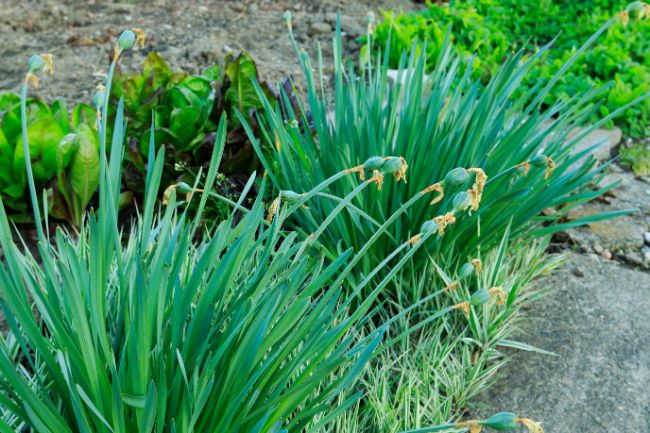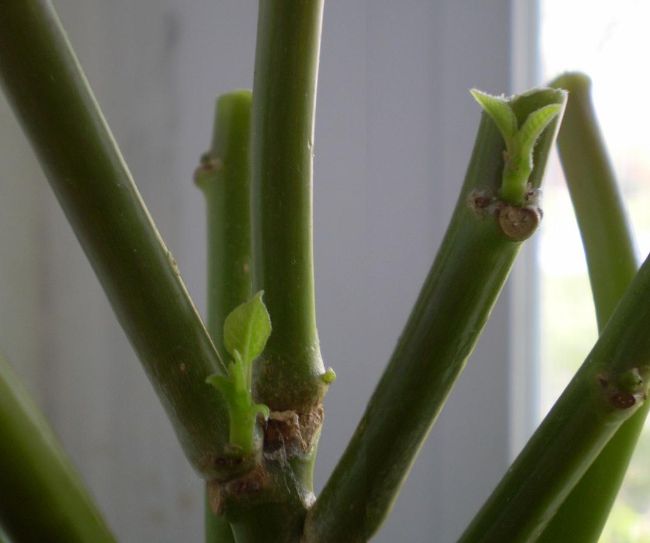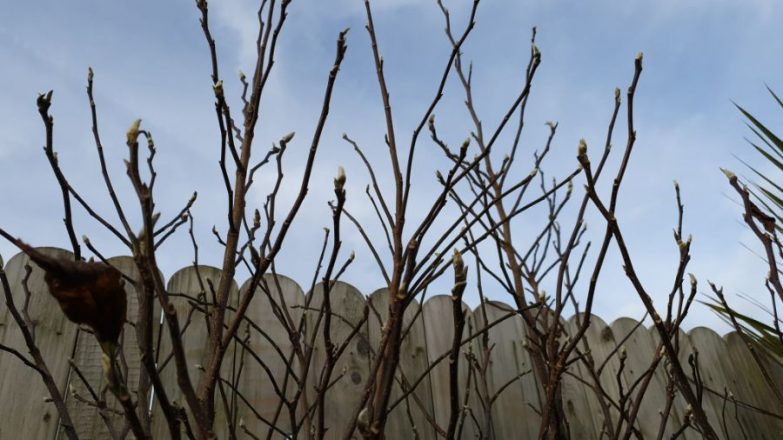You know that feeling in the fall and winter that makes you want to hunker down, stay inside, and relax for a good long time? Plants go through a similar experience known as plant dormancy. Your favorite plants may be looking a little rough around the edges, but this period of rest during plant dormancy helps them gear up for a season of growth.
What Is Plant Dormancy? Plant dormancy is simply a period of rest or metabolic inactivity that most plants go through to conserve resources, survive weather extremes and stress such as winter or drought, and to prepare for the next season of growth.
Keep reading to find out more about plant dormancy and how you can nourish and care for your plants during this time.
What Is Plant Dormancy?
Plant dormancy is a phase of the plant’s growing season where it slows down and begins to rest. Dormancy can also protect the plant against harsh conditions such as frigid winter temperatures and extreme stresses such as drought.
For example, deciduous trees shed their tender leaves in the fall, leaving the tough bark and and wood to survive the cold and snow. The trees metabolic processes have largely come to a halt, and the tree no longer grows or reproduces until the spring and more temperate weather returns. Then the tree will grow new leaves, which will allow the sunshine to nourish the tree so it can grow and reproduce.
Dormancy can be triggered by shorter days and therefore less daylight, or by cooler temperatures, or both, depending on the plant. Dormancy can also be triggered by extreme heat or drought, which causes the plant to enter a state of dormancy until more favorable growing conditions arrive.
Houseplants kept in relatively stable home conditions may need a little coaxing to go dormant, so you might need to move them to a cooler, darker area of the home.
For example, plants such as Christmas cacti and Poinsettias need a period of dormancy in order to flower again. They need cooler temperatures, less water, and long, dark nights to rest up for the flowering phase. Once they have been dormant long enough to recharge their batteries, so to speak, they will develop buds and can be moved back into their regular location to flower again.
Check out this helpful video explaining plant dormancy by Betsy Begonia
What Impact Does Plant Dormancy Have On The Growth And Life Cycle of Plants?
Almost all plants will go dormant for the winter, no matter if they are indoor tropical plants or outdoor plants. The exception is annuals, which die off every year but don’t regrow in the spring. Annuals are only good for one season.
Outdoor plants will go dormant to conserve resources and prevent freezing. Tender leaves would freeze easily in the cold, so deciduous trees drop those leaves, save their resources to nourish the roots of the plants or trees, and prepare to grow all new leaves in the spring.
Indoor plants will also go dormant, even though the temperatures in your home may be stable. Even indoor plants are susceptible to the shortened days and less light. This means they don’t have enough sunlight hours for photosynthesis to convert sunlight into energy for the plant to grow and reproduce. Instead, the metabolic processes slow down, the plant stops reproducing and growth is stopped or greatly slowed.

Why Do Some Plants Have A Period Of Dormancy?
Although plants may look like they are dying or drooping while they are dormant, they are still hard at work. Plants will break down and remake proteins to get them ready for the burst of growth they experience in the spring. Outdoor plants and trees will conserve energy to nourish the roots of the plant, as well.
If the plant does not go dormant or have a time of rest, it may not have the resources to grow, bloom, and reproduce in the spring.
What Happens To Plants When They Enter Dormancy?
Houseplants may simply seem to stop growing when they enter a period of dormancy, almost as if someone has hit the pause button on growth. Their leaves may turn yellow, they may droop a bit, or they may completely lose their leaves altogether.
Plants will stop blooming and reproducing. They will take in less water, and you may notice that the soil stays damp for longer periods of time. All of these plant behaviors give the plant a break and allow it to rest and recharge for a new season of growth.
Outdoor plants, such as spring flowers that grow from bulbs (think daffodils and tulips) will die off, leaving nothing but the bulb hidden underground. The bulb stores up energy for fresh growth and blooms in the spring. If the plants did not go dormant, the bulbs would be unable to store enough energy to bloom the following year.
Deciduous trees will lose their leaves and might appear to have died, while evergreen trees retain their needles, but their growth slows greatly or stops altogether. This protects them from damage from the frigid harsh weather.
How Can You Tell If Your Plant Is Dormant Or Dying?
You can tell if your plant is dormant or dying by doing three simple tests.
- Snap test. You can tell if a plant is dead or dormant by doing a snap test. Choose the end of a stem or branch about as big around as a pencil. Try to snap the branch in half. A dead branch or stem will snap easily and have a dried out look on the inside. However a dormant branch will bend and when it splits open will reveal moist wood on the inside.
- The Scratch Test. You can also use the scratch test to see if your plant is dormant or dying. Choose a young stem and use your fingernail or a sharp knife to scratch at the bark. If there is green, then the plant is still alive. If its brown, try again, but close to the roots.
- Root Inspection. The last test you can try to see if your plant is dead or dormant is root inspection. A plant that is dormant will have healthy roots even if the rest of the plant still looks dead. If necessary, you can remove the plant from the pot and see if the roots look healthy or have shriveled and died.

How Does Plant Dormancy Affect Their Care Requirements?
During your plant’s winter dormancy phase, it will either stop growing completely or its growth will be very slow. This means its care requirements will change as well.
- Water less. Overwatering is a common cause of plant death, and this is especially true in the winter months. Since your plant’s metabolic processes have slowed down, it isn’t using as much water as it would when it is growing. You won’t need to water your plant nearly as often as you do when it is in its growth phase.
- Prune. Winter dormancy is a great time to prune away old, woody growth in your houseplants. Trim off any suckers, dead leaves and branches, and other parts of the plant that are undesirable.
- Refresh the soil or repot. Eventually, the soil in your houseplant’s pot will get depleted and need to be refreshed. Winter dormancy is a good time to repot the plant into a bigger pot, if needed, with fresh potting soil. It will be less stressed during this time and then it will be ready for spring growth when the time is right.
- Don’t fertilize. Your plants don’t need extra fertilizer when they are dormant. It’s better to wait until you see signs of growth in the late winter and early spring.
- Increase humidity, if needed. In most homes, the humidity drops in the winter when the heat is running or wood stoves are burning. You may need to increase humidity a bit for those plants that prefer very humid environments. This is easily accomplished by setting the plant on a tray of pebbles and filling the tray with water.
- Keep them clean. Dust accumulation on leaves can reduce the already limited amount of light available to your plants. Take a little time to gently clean them.
- Keep them away from drafts. Even though they are dormant, your tropical house plants are still susceptible to cold drafts. Make sure to keep them away from cold windows and doors.
Watch For Signs Of New Growth
As spring gets closer, the days will begin to lengthen, and this is a good sign that your plant is about to start growing again. As your plant goes from its dormancy phase to a growth phase, you will begin to see signs of growth on your plant. When you start to see buds, little bits of growth, or new blooms and branches, you can begin to water and fertilize the plant as usual. It will need the boost to get it ready for spring growth again.

